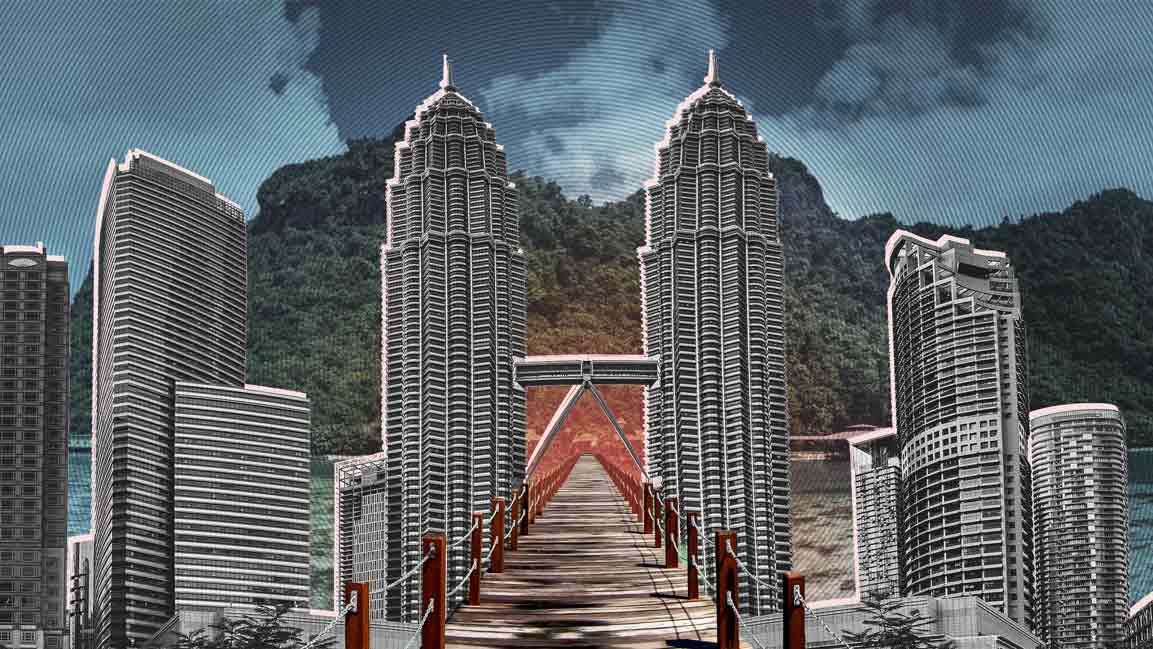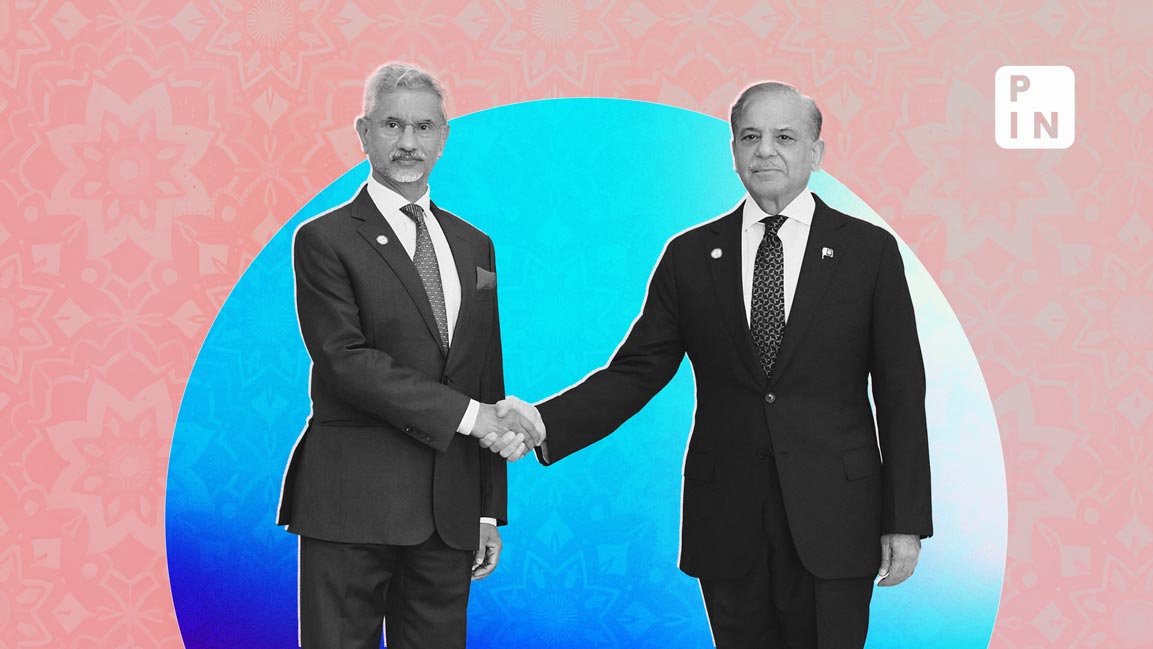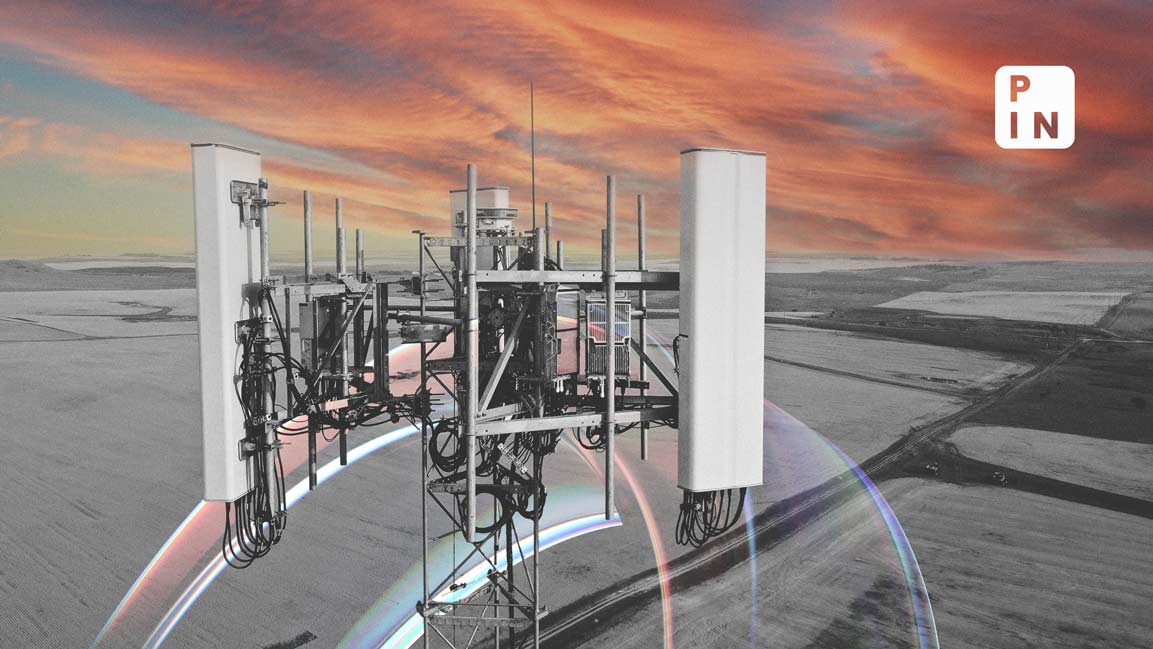- | 5:19 pm
India, Malaysia switch gears as ties take off
A series of high-profile visits last year, topped up by a more relaxed visa policy, has helped improve relations following a brief strain in ties

Last month, the boss of Malaysia’s flagship airline landed in New Delhi for negotiations with an Indian airline about a possible tie-up to expand its reach in India.
Izham Ismail, managing director of Malaysia Aviation Group, the parent firm of Malaysia Airlines, said he was eyeing a code-share agreement but did not specify with which carrier.
A code-share partnership allows airlines to sell seats on each other’s flights, effectively extending their network reach. This arrangement also allows passengers to book journeys involving multiple airlines under a single booking reference.
Malaysia Airlines currently operates 69 weekly flights serving nine Indian cities-Delhi, Mumbai, Bengaluru, Chennai, Hyderabad, Kochi, Amritsar, Ahmedabad, and Thiruvananthapuram.
Ismail’s visit came close on heels of Malaysian Prime Minister Anwar Ibrahim’s announcement in November scrapping entry visa requirements for Indian as well as Chinese citizens. The new policy, which began in December, allows Indian and Chinese nationals a 30-day visa-free stay in Malaysia.
The potential code-share partnership and new visa rule are expected to boost ticket sales, setting off a boom in tourism prospects and, by extension, the people-to-people connect.
The travel bug
Malaysia’s new entry visa policy comes even as Indian travelers are set to become the fourth largest global spenders on tourism by 2030, a joint projection by Booking.com and McKinsey showed in a recent study.
Travel expenses of Indians, across domestic and foreign trips, are set to grow from $150 billion in 2019 to $410 billion by the end of the decade, with aggregate trips climbing from 2.3 billion now to around 5 billion by 2030, the study said.
“By targeting specific markets like India and China, governments may aim to diversify their tourism sources, reducing dependency on traditional markets and expanding their reach to emerging economies with a growing middle class,” Noriah Jafar, director of Malaysia Tourism Promotion Board in India, said.
“The potential influx of Indian tourists may contribute to higher spending on accommodation, dining, and transportation, positively impacting the Malaysian economy. In addition, business travelers, investors, and professionals may find it more convenient to conduct meetings, explore opportunities, and participate in trade events, fostering economic cooperation between the two countries.”
As of November 2023, India ranked as the sixth largest source of tourists to Malaysia, with 0.78 million visitors. Leading the list is Singapore with 12.6 million, followed by Indonesia (3.2 million), Thailand (2.1 million), China (1.4 million), and Brunei (0.90 million). Malaysia Tourism is now looking to welcome more than one million Indian tourists this year.
Historic ties
Tourism isn’t the only pillar of Indo-Malaysian relations. A rich history of cultural exchanges also underscores the deep-rooted connections between the two nations.
“History books rarely mention the antiquity of bilateral relations between India and Malaysia,” Veena Sikri, former Indian envoy to Malaysia and author of the book, India and Malaysia: Intertwined Strands, told Press Insider.
“Even 2,000 years ago, there were active maritime exchanges, and the focus of the bilateral relations has always been trade,” Sikri said, stressing “the antiquity of the relationship between the two countries needs to be strengthened and preserved.”
“There are references of ships leaving the eastern coast of Odisha and going straight to the Penang mainland, where a Shiv temple is situated,” Sikri said, while noting that the otherwise robust trade relations faced challenges when Indian laborers, brought to Malaysia by the British, were denied citizenship rights post-Independence.
Highlighting the potential of India’s Act East policy, Sikri emphasized its role in reinforcing India’s ties with Malaysia and fostering broader engagement with the Association of Southeast Asian Nations (Asean), particularly in education, technology, defense, and investments.
India’s ‘Act East Policy’ was launched in 2014, marking a shift from bilateral to strategic and multilateral engagement with Asean and key East Asian nations such as Japan, South Korea, and Pacific countries, including Australia.
This policy expansion sought to strengthen economic, cultural, and strategic ties, emphasizing India’s role in the broader Indo-Pacific region.
Modern era
India and Malaysia marked 65 years of diplomatic relations in September 2022. At an event held in Kuala Lumpur, then Malaysian foreign minister Saifuddin Abdullah termed the bilateral ties as “civilizational.”
“Both Malaysia and India present positive examples of multi-racial society and diversity to the world, and this has been our connect as well as strength,” Abdullah said.
The remarks signaled a warming of relations following a period of tension since 2019 in the wake of controversial comments by former Malaysian prime minister Mahathir Mohammed regarding Kashmir at the UN General Assembly.
The statements strained bilateral relations before both sides eventually initiated diplomatic efforts to mend ties.
High-profile visits in 2023, including that of minister of state for external affairs V. Muraleedharan in June, defense minister Rajnath Singh in July, and Malaysian foreign minister Zambry Abdul Kadir in November, have helped steady ties.
Kadir’s visit for the sixth India–Malaysia joint commission meeting was the latest in a series of steps towards re-establishing stronger diplomatic and economic ties.
The joint commission meeting, co-chaired by foreign minister S Jaishankar, reviewed the progress of the Enhanced Strategic Partnership, an agreement both countries had signed in November 2015 that covers security, and investments, among other areas.
Beyond diplomacy, these high-profile visits have also paved the way for deeper defense collaboration, marking a new chapter in Indo-Malaysian military cooperation.
Defense ties
Defense relations between India and Malaysia have been steadily growing, with a particular emphasis on boosting defense industrial cooperation.
In July last year, during Rajnath Singh’s visit to Malaysia, both countries amended a memorandum of understanding (MoU) on defense cooperation that was signed in 1993.
During his visit, Singh and his Malaysian counterpart, Mohamad Hasan, focused on the potential of India’s defense industry in supporting modernization and maintenance plans of Malaysia’s armed forces.
Had an excellent meeting with the Defence Minister of Malaysia, Mr. Mohamad Hasan in Kuala Lumpur today.
We reviewed the diverse pillars of the extensive bilateral defence engagement and discussed the roadmap for the 4th Decade of India-Malaysia Defence Cooperation. @tokmatn9 pic.twitter.com/XcraEavywL
— Rajnath Singh (@rajnathsingh) July 10, 2023
Singh inaugurated Hindustan Aeronautics Ltd’s (HAL’s) Kuala Lumpur office to help facilitate close defense industrial collaboration between both countries.
Earlier, during Prime Minister Narendra Modi’s visit to Malaysia in 2015, both nations had agreed to set up the SU-30 Forum for cooperation in training, maintenance, technical support and safety-related issues.
This effort extended the Indian Air Force’s (IAF’s) earlier assistance, which saw personnel being sent to Malaysia between 2008 and 2010 to train RMAF pilots at the Gong Kedah base, according to the Indian High Commission in Kuala Lumpur.
The Malaysia-India Defense Cooperation Committee (MIDCOM), jointly led by the defense secretaries of both nations, meets annually, with their latest session held in New Delhi last September.
The Indo-Pacific Initiative
As India and Malaysia explore the potential for an enhanced strategic partnership, Kuala Lumpur has taken a cautious stance on the Indo-Pacific Oceans Initiative (IPOI).
This initiative, already joined by regional neighbors Indonesia and Vietnam, aims to promote cooperation, security, stability, and prosperity throughout the Indo-Pacific.
Announced by Modi at the East Asia Summit in November 2019, the IPOI seeks to collaborate with interested countries in the region on maritime security, ecology, capacity building and resource sharing.
“Malaysia is welcome to join any pillar of interest of the IPOI, and work together for sustainable development of the Indo-Pacific region,” V. Muraleedharan, minister of state for external affairs, said at an event in Kuala Lumpur last year.
However, Malaysia, similar to many in the Asean, finds it imprudent to explicitly support a contentious concept, considering such endorsement as potentially hazardous as the rivalry between the US and China intensifies.
Malaysia is inclined towards a pragmatic and non-aligned foreign policy stance, steering clear of aligning itself with any side in global power dynamics, Khoo Ying Hooi, head of the Department of International and Strategic Studies at Universiti Malaya, wrote in The Diplomat.
Trade ties
Kuala Lumpur ranked as one of New Delhi’s top ten trading partners in 2022, with imports from the former valued at about $12 billion, data from Malaysia’s department of statistics showed.
Among Asean countries, New Delhi considers Kuala Lumpur its third most important trading ally, according to commerce ministry data.
India exports primarily mineral fuels, oils, aluminium, and machinery to Malaysia, while importing mineral fuels, oils, electrical equipment, and machinery.
Malaysian investment in India focuses significantly on the infrastructure sector, targeting roads, railways, and airport and port upgrades.
India and Malaysia’s cultural and civilizational connections underscore Zambry’s November visit to India, highlighting future cooperation possibilities, especially in renewable energy, and semiconductors.
Datuk Umang Sharma, the founder-chairman of the Consortium of Indian Industries in Malaysia said both countries can collaborate in sectors such as semiconductors, education, and green energy, with India providing skilled manpower for Malaysian businesses.
“Penang boasts a robust semiconductor ecosystem. Malaysia’s diverse industries require skilled workers, presenting an opportunity for India to bridge this gap. Moreover, both nations are making significant strides in renewable energy, with Malaysia and India setting ambitious goals. Consequently, solar manufacturing is thriving in Malaysia,” Sharma said, pointing to the areas of possible cooperation.
The giant strides India has taken in stacking up its digital public infrastructure presents models such as the Unified Payments Interface system and RuPay payment service that Malaysia can adopt, and holds promise to enhance financial interactions between both nations.
“To future-proof our bilateral relations, we should focus on sectors that leverage our mutual strengths. With the Malaysia Digital initiative and India’s prowess in digital technology and trained workforce, collaboration in the digital economy is a natural fit,” Sharma added.
What lies ahead?
Sultan Ibrahim Sultan Iskandar of Johor province, which has a causeway link to Singapore, this week took over as the new king, a constitutional post in Malaysia under the country’s unique rotational monarchy.
The position of king, or the Yang di-Pertuan Agong, is passed among the rulers of the nation’s nine Malay states, with each serving a term of five years.
Sultan Ibrahim is the sole Malaysian monarch who has a private army, a unique arrangement that his family secured with the country’s erstwhile British colonial masters.
Under Malaysian constitution, the powers of the rulers are confined to state matters. The king’s powers, however, are broader, including appointing a prime minister and refusing requests to dissolve parliament. This clause is of particular importance, especially in the wake of Malaysia’s current volatile political situation.
Since 2018, the country has seen three prime ministers. In the last elections held in November 2022 , the Pakatan Harapan (Alliance of Hope) party of current prime minister Anwar Ibrahim won 82 seats, short of the majority mark (112), before he cobbled together an alliance of nearly 20 parties to form the government.
This precarious electoral situation has also intensified the political class’s dependency on the monarchy.
Ibrahim’s inauguration as Malaysia’s 10th Prime Minister, meanwhile, has renewed hopes for a fresh chapter in Indo-Malaysian relations.
Ibrahim, who has been a minister and the leader of the opposition, has fostered warm relations with New Delhi, including Prime Minister Narendra Modi.
Following his victory in the elections, Ibrahim reaffirmed Malaysia’s commitment to strengthening its partnership with India while responding to a congratulatory tweet from PM Modi.
https://twitter.com/anwaribrahim/status/1595938624482480128
More recently, the cultural bonds between Malaysia and India were put on display when Ibrahim warmly welcomed Tamil cinema icon Rajinikanth in September.
https://twitter.com/anwaribrahim/status/1701156852866966010
The Malaysian leader’s use of a gesture from Rajinikanth’s famed role in ‘Sivaji The Boss’ added not just a personal touch, but a deliberate nod to the rich cultural heritage shared by the two nations.
This moment of cultural diplomacy highlights the deep, multifaceted ties that extend beyond formal politics, suggesting a promising avenue for strengthening bilateral relations.
This story is part of a series exploring India’s ties with Southeast Asian nations.
Update: The story has been edited to improve sourcing.













